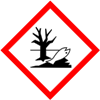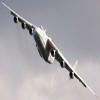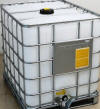Search for the supplies that you need here:
DMF Support and Documentations Available | |
 WHO-GMP Certified Good Manufacturing Practice Certified by World Health Organization |  WC, Written Confirmation for Active Substance to be imported into European Union (EU). |
alpha-Lipoic Acid or α-Lipoic Acid or Thioctic Acid SDS of Manufacturers
Anmol Chemicals is a manufacturer supplier exporter of alpha-Lipoic Acid or α-Lipoic Acid or Thioctic Acid BP Ph Eur USP Dietary Supplement Grade and it offers materials as per IP BP EP Ph Eur USP NF JP FCC Food Grade as per the the latest monograph at best prices. Anmol Chemicals Group, established in 1976, is the pioneer manufacturer of Specialty Chemicals, Pharmaceutical Excipients, Some API, Food Chemicals in India. Anmol Chemicals Group has manufacturing facilities spread across Western India, representatives in Houston, Chicago USA and Dubai, UAE. We also have toll manufacturing units for processing chemicals in a few countries around the world. We make IP, BP, EP, USP, NF, Ph. Eur., JP, FCC or Food Grade, Analytical Reagent Grade, LR or Laboratory Reagent Grades and Pure Grades of various chemicals. All our items are analyzed to meet the required standards. We can supply the product in grams for your laboratory trial and in tons for your plant scale jobs.
We manufacture Bulk Drugs / API, Excipients, Pharmaceuticals (IP BP USP NF Ph Eur EP JP), Specialty Chemicals (Pure/Reagent), Mineral Fortifiers (FCC). Our manufacturing facility is FDA approved and GLP, cGMP, ISO9001, ISO14001, ISO/IEC 17025, ISO22000, FSSC 22000, ISO45001, FSSAI, Kosher, HALAL, COPP, WHO-GMP certified and Written Confirmation (WC) is available. Solid materials can be customized for particle size, shape, and bulk density. We observe WHO Good Manufacturing Practices and Good Laboratory Practices. We are a government-recognized STAR Export House and "Authorised Economic Operator (AEO)" per Indian Customs.
All technical documents and DMF support available.
alpha-Lipoic Acid or α-Lipoic Acid or Thioctic Acid Specifications of Manufacturers

Synonyms: alpha-Lipoic Acid or α-Lipoic Acid or Thioctic Acid
CAS Number: 1077-28-7 or 1200-22-2, Molecular Weight: 206.32, Chemical Formula: C8H14O2S2, EINECS EC Number: 214-071-2, FEMA: ----,
α-Lipoic Acid or alpha-Lipoic Acid or Thioctic Acid SDS, Safety Data Sheet
MSDS Sheet, Material Safety Data Sheet 25-April-25
1. Product Identification
Product Name & Other Names: α-Lipoic Acid or alpha-Lipoic Acid or Thioctic Acid.
CAS No.: 1077-28-7 or ( also 1200-22-2)
EINECS EC Number: 214-071-2
Molecular Formula: C8H14O2S2
Molecular Weight: 206.32
Relevant uses and uses advised against (if any): Laboratory and Industrial Use.
Supplier: As per letterhead.
2. Hazards Identification
GHS, Globally Harmonized System Classification in accordance with 29 CFR 1910
Classification according to Regulation (EC) No 1272/2008
Acute toxicity, oral Category 4, H302
Skin corrosion/irritation Category 2, H315
Skin sensitization, Category 1, H317
Serious eye damage/eye irritation Category 2A, H319
Hazardous to the aquatic environment, long-term hazard Category 2, H411
Labeling according to GHS USA & Regulation (EC) No 1272/2008
GHS Label Elements  Irritant |
GHS Label Elements  Aquatic Toxicity |
Signal Words: Warning
Hazard Statements:
H302: Harmful if swallowed.
H315: Causes skin irritation.
H317: May cause an allergic skin reaction.
H319: Causes serious eye irritation.
H411: Toxic to aquatic life with long lasting effects.
Precautionary Statements:
P264: Wash contaminated parts thoroughly after handling.
P270: Do not eat, drink or smoke when using this product.
P273: Avoid release to the environment.
P280: Wear protective gloves/protective clothing/eye protection/face protection.
P301+P310: IF SWALLOWED: Immediately call a POSION CENTER or doctor/physician.
P303+361+353: IF ON SKIN (or hair): Remove/Take off immediately all contaminated clothing. Rinse skin with water/shower.
P333+313: If skin irritation or a rash occurs: Get medical advice/attention.
P403+233+235: Store in a well-ventilated place. Keep container tightly closed. Keep cool.
P362: Take off contaminated clothing and wash before reuse.
P391: Collect spillage.
P405: Store locked up.
P501: Dispose of contents/container in accordance with local/national regulation.
Classification according to EU Directives 67/548/EEC or 1999/45/EC:
Hazard Symbols:
Xn Harmful
N Dangerous for the environment.
Risk Phrases:
R22 Harmful if swallowed.
R36/38 Irritating to eyes & skin.
R43 May cause sensitization by skin contact.
R51/53 Toxic to aquatic organisms, may cause long-term adverse effects in the aquatic environment.
3. Composition/Information on Ingredients
Product Name & Other Names: α-Lipoic Acid or alpha-Lipoic Acid or Thioctic Acid.
CAS No.: 1077-28-7 or ( also 1200-22-2)
EINECS EC Number: 214-071-2
Molecular Formula: C8H14O2S2
4. First Aid Measures
Always seek medical attention after first aid measures are provided.
Inhalation: Remove to fresh air. If not breathing, give artificial respiration. If breathing is difficult, give oxygen. Do not use mouth-to-mouth method if victim inhaled the substance. Induce artificial respiration with the aid of a pocket mask equipped with a one-way valve or other proper respiratory medical device. Get medical attention.
Ingestion: Rinse mouth. Do not induce vomiting without medical advice. If vomiting occurs naturally, have victim lean forward to reduce risk of aspiration. Never give anything by mouth to a victim who is unconscious or is having convulsions. Get medical attention.
Skin Contact: Wipe off excess material from skin then immediately flush skin with plenty of water for at least 15 minutes. Use a mild soap if available. Remove contaminated clothing and shoes. Get medical attention. Wash clothing before reuse. Thoroughly clean shoes before reuse. For minor skin contact, avoid spreading material on unaffected skin.
Eye Contact: Immediately flush eyes with plenty of water for at least 15 minutes, lifting lower and upper eyelids occasionally. Get medical attention immediately.
5. Fire Fighting Measures
Products of Combustion: Carbon oxides, sulfur oxides, and toxic fumes.
Fire Extinguishing Media: Water fog. Alcohol foam. Dry chemical. Polymer foam. Dry chemical powder. Carbon dioxide (CO2). Avoid a solid water stream as it may scatter and spread fire. Fire residues and contaminated fire extinguishing water must be disposed of in accordance with local regulations. In the event of fire and/or explosion do not breathe fumes.
Special Information: In the event of a fire, wear full protective clothing and NIOSH-approved self-contained breathing apparatus with full face piece operated in the pressure demand or other positive pressure mode. At high temperatures under fire conditions, it may produce toxic or irritating fumes. Fire-extinguishing work is done from the windward and the suitable fire-extinguishing method according to the surrounding situation is used. Uninvolved persons should evacuate to a safe place.
6. Accidental Release Measures
Personal precautions: Ensure adequate ventilation. Keep people away from and upwind of spill/leak. Do not touch damaged containers or spilled material unless wearing appropriate protective clothing. Ventilate closed spaces before entering. Keep out of low areas.
Environmental precautions: Prevent further leakage or spillage if safe to do so. Do not contaminate water.
Methods for containment: Stop leak if you can do so without risk. Move containers to a safe and open area if the leak is irreparable.
Dike the spilled material, where this is possible. Prevent entry into waterways, sewers, basements, or confined areas.
Methods for cleaning up: Clean up in accordance with all applicable regulations. Should not be released into the environment.
Small Spill: Avoid dust/mist formation. Avoid breathing dust/mist. Ensure adequate ventilation. Wipe up with absorbent material (e.g., cloth, fleece). Clean contaminated surface thoroughly.
Large Spill: Dike far ahead of liquid spill for later disposal. Use a non-combustible material like vermiculite, sand, or earth to soak up the product and place into a container for later disposal. Storage: 2C to 8C refrigerate. OK to freeze. Short term shipping may be at ambient temperature. Protect from air and light.
7. Handling and Storage
Precautions for safe handling: Do not handle or store near an open flame, heat, or other sources of ignition. All equipment used when handling the product must be grounded. Use only with adequate ventilation. Apply according to good manufacturing and industrial hygiene practices. Ensure proper ventilation. Wash thoroughly after handling. Do not drink, eat, or smoke while handling. Avoid contact with skin, eyes, and clothing. Minimize dust generation. Avoid breathing dust/fumes/gas/mist/vapors/spray. Keep container tightly closed. Avoid ingestion and inhalation. Use individual protective equipment (waterproof boots, suitable protective clothing, safety glasses, etc.). Prevent any contact with hot surfaces.
Conditions for safe storage, including any incompatibilities: Store in cool, dry, and ventilated area away from heat sources and protected from sunlight in tightly closed original container. Keep air contact to a minimum. Do not leave the material container open. Store protected from heat, sparks and ignition sources and incompatible materials. Avoid contact with skin and eyes. Avoid inhalation of dust/mist/vapor. Do not store with incompatible materials like oxidizing agents.
8. Exposure Controls/Personal Protection
Airborne Exposure Limits: Not established.
Ventilation System: A system of local and/or general exhaust is recommended to keep employee exposures as low as possible. Local exhaust ventilation is generally preferred because it can control the emissions of the contaminant at its source, preventing dispersion of it into the general work area.
Personal Respirators (NIOSH Approved): For conditions of use where exposure to dust or mist is apparent and engineering controls are not feasible, a particulate respirator may be worn. For emergencies or instances where the exposure levels are not known, use a full-face positive-pressure, air-supplied respirator.
Skin Protection: Wear protective gloves and clean body-covering clothing.
Eye Protection: Use chemical safety goggles and/or full-face shield where dusting or splashing of solutions is possible. Maintain eye wash fountain and quick-drench facilities in work area.
Other Control Measures: Maintain good housekeeping in work area. Handle in accordance with good industrial hygiene and safety practice. Wash hands after handling.
9. Physical and Chemical Properties
Appearance: Yellow Crystalline Powder.
Odor: Not available.
Odor threshold: Not available.
pH: Not available.
Relative density: Not available.
Boiling point: 243C to 246C literature.
Melting point/Freezing point: about 1.29
Flash point: 162C- 163C.
Auto-ignition temperature: Not available.
Decomposition temperature: Not available.
Upper/lower flammability or explosive limits: Not available.
Vapor pressure: Not available.
Vapor density: Not available.
Evaporation rate: Not available.
Flammability (solid, gas): Not available.
Partition coefficient: n-octanol/water: Not available.
Solubility (water): Practically insoluble in water. Slightly soluble in methanol, chloroform and DMSO.
Viscosity: Not available.
Molecular Formula: C8H14O2S2
Molecular Weight: 206.32
10. Stability and Reactivity
Stability: It is stable under ordinary conditions of use and storage.
Hazardous Decomposition Products: It emits carbon oxides, sulfur oxides, and toxic fumes when heated to decomposition.
Hazardous Polymerization: Will not occur.
Incompatibilities: Oxidizing agents.
Conditions to Avoid: Avoid light, heat, sparks, open flames and other ignition sources. Contact with incompatible materials.
11. Toxicological Information
Skin: Harmful in contact with skin.
Ingestion: Harmful if swallowed.
Toxicity data:
LD50 Oral - Rat - 1190 mg/kg
Carcinogenicity: Not expected to be hazardous by IARC, OSHA criteria.
Sensitization: May cause sensitization by skin contact.
Mutagenic Effects: No information available
Reproductive Effects: No information available.
Developmental Effects: No information available.
Teratogenicity: No information available.
12. Ecological Information
Toxicity to fish: static test LC50 - Danio rerio (zebra fish) - 43 - 96 mg/l - 96 h
Toxicity to daphnia & other aquatic invertebrates: static test EC50 - Daphnia magna (Water flea) - ca. 15,1 mg/l - 48 h.
Ecotoxicity: Components of this product have been identified as having potential environmental concerns.
Aquatic toxicity: May cause long-term adverse effects in the aquatic environment. Toxic to aquatic life. Discharge into the environment must be avoided.
Bioaccumulative potential: No information available.
Mobility in soil: No information available.
Results of PBT and vPvB assessment: No information available.
13. Disposal Considerations
Whatever cannot be saved for recovery or recycling should be managed in an appropriate and approved waste disposal facility. Processing use or contamination of this product may change the waste management options. State and local disposal regulations may differ from federal disposal regulations. Dispose of container and unused contents in accordance with federal, state, and local requirements.
14. Transport Information
DOT USA, TDG Canada & ADR/RID Europe:
UN proper shipping name: Environmentally hazardous substance, solid, n.o.s. (alpha-Lipoic Acid)
UN number: 3077; Transport hazard class(es): 9; Packing group: III.
IMDG/IMO & IATA/ICAO:
UN proper shipping name: Environmentally hazardous substance, solid, n.o.s. (alpha-Lipoic Acid)
UN number: 3077; Transport hazard class(es): 9; Packing group: III.
15. Regulatory Information
USA:
SARA 311/312 Hazards: Acute Health Hazard. See section 2.
California Prop. 65 Components: Not listed.
Section 16 - Additional Information
European/International Regulations European Labeling in Accordance with EC Directives:
H302: Harmful if swallowed.
H315: Causes skin irritation.
H317: May cause an allergic skin reaction.
H319: Causes serious eye irritation.
H411: Toxic to aquatic life with long lasting effects.
Hazard Symbols:
Xn Harmful
N Dangerous for the environment.
Risk Phrases:
R22 Harmful if swallowed.
R36/38 Irritating to eyes & skin.
R43 May cause sensitization by skin contact.
R51/53 Toxic to aquatic organisms, may cause long-term adverse effects in the aquatic environment.
Disclaimer:
**************************
Our company provides this MSDS sheet in good faith but makes no representation as to its comprehensiveness or accuracy. This SDS sheet is intended only as a guide to the appropriate precautionary handling of the material by a properly trained person using this product. The above information has been compiled from various sources and has the possibility of discrepancy and being out-dated information. Individuals receiving the information must exercise their independent judgment and do further search in determining its appropriateness for a particular purpose. In no case shall our company be liable to loss or damages by the product user.
**************************



ANMOL CHEMICALS Private Limited
Representatives in Houston, Chicago and New York, USA
TEL: (OFF) +91 22 23726950, +91 22 23774610, +91 22 23723564
Taloja Navi Mumbai, Banglore, INDIA
e-mail: info@anmol.org
Copyright and Usual Disclaimer is Applicable
Last updated 5-oct-25
Exporters to USA, Canada, UAE, Kuwait, Qatar, Gautemala, Tunisia, Europe, South Africa, Bangladesh, Sri Lanka, Tanzania, Kenya, Egypt, Iraq, Turkey, Israel, Vietnam, Nigeria, Uganda, Brazil, Chile, Argentina, Dubai, UAE, Saudi Arabia, Cameroon, Mexico, Brazil, Chile, Argentina, Korea, Thailand, Malaysia, Indonesia, Jakarta, Australia, China, Germany, France, etc.
Representatives in New York, Houston - Texas, Chicago - Illinois, Los Angeles.
All products are Sold for Industrial and Laboratory Use only.
Fast Selling IP BP Ph Eur EP USP NF JP Analytical Reagent FCC Food Grades of Chemicals by Anmol Chemicals
Ammonium Persulfate --- Acetic Acid Glacial --- Aluminum Chloride --- Ammonium bicarbonate --- Benzyl Alcohol --- Butylated Hydroxyanisole --- Butylated Hydroxytoluene --- Boric Acid --- Calcium Butyrate --- Calcium Chloride --- Calcium Hydroxide --- Calcium Lactobionate --- Calcium Saccharate --- Carbamide Peroxide --- Calcium Oxide --- Calcium Sulfate --- Chromic Chloride --- Fumaric Acid --- Magnesium Butyrate --- Magnesium Chloride --- Magnesium Sulfate --- Malic Acid --- Maleic Acid --- Manganese Chloride --- Manganese Sulfate --- Octyldodecanol --- Oleic acid --- Phenylethyl Alcohol --- Propylene Carbonate --- Potassium Hydroxide Pellets --- Potassium Alum --- Selenious Acid --- Sodium Acetate --- Sodium Bromate --- Sodium Selenite --- Sodium Perborate --- Sodium Hydroxide --- Sodium Sulphate --- Sodium Sulfide --- Sodium Thiosulfate --- Urea --- Zinc Chloride --- Zinc Sulphate ---


















